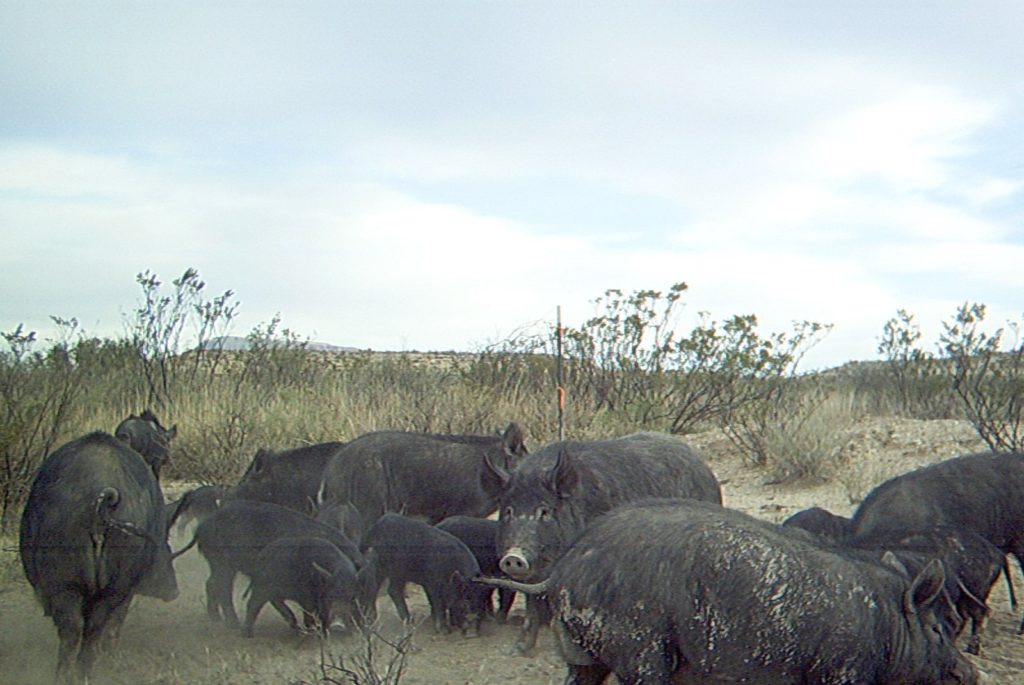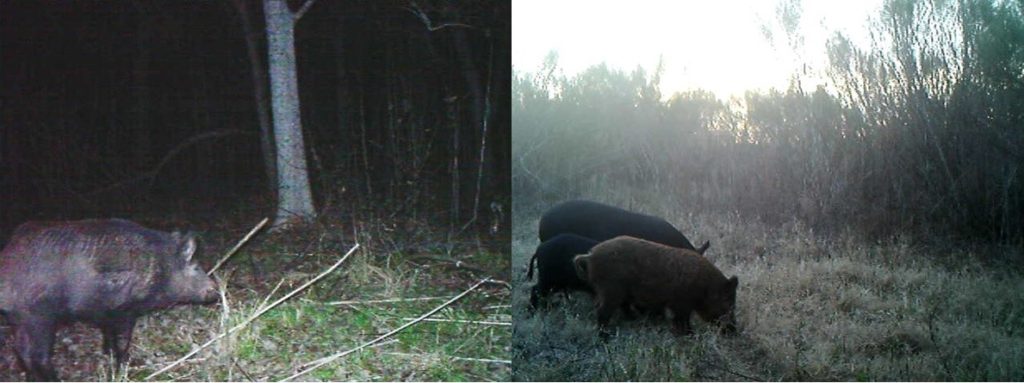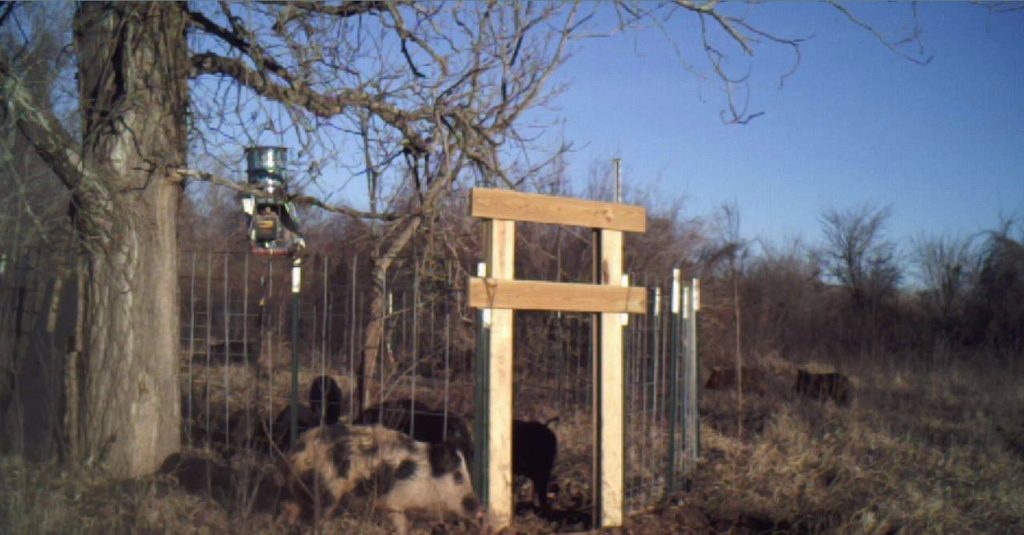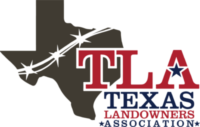
Using Game Cameras for Feral Hogs
The Role of Game Cameras in Feral Hog Management
Whether you call them game cameras, trail cameras, or camera traps, no one can argue the advantage that motion-activated cameras give to the wild game manager. One of the best ways to put this advantage to work is when managing invasive feral hog populations.
Hogs can be quite elusive and are known to be highly nocturnal in many areas of the state. Without the extra set of eyes provided by game cameras, many wild game managers are left in the dark concerning how feral hogs are responding to their management efforts.
Scouting Feral Hogs with Game Cameras
Site selection is one of the most important steps in the scouting phase of feral hog abatement efforts. Multiple researchers have suggested that hog sign in an area is one of the most important factors in rapid site discovery by feral hogs (Wathen et al. 1988 and Williams et al. 2011).
Our YouTube video Understanding Wild Pig Signs can help you gain more insight into the various signs left behind by feral hogs.

Active trails or other areas such as wallows are often a great place to begin your game camera scouting efforts. Game camera images can play a vital role in deciding which management technique is best suited for the hogs in the area. The lone boar pictured on the left could be harvested via strategic shooting whereas a better strategy for the sounder (Group of Hogs) on the right might be to use a corral trap.
In both cases, game cameras will assist the wild game manager in discerning the hog(s) behavior relative to the management actions being implemented.
Monitoring Feral Hogs with Game Cameras
At times feral hog management can be likened to a cycle of cause and effect. Game cameras can be one of the key tools in breaking the cycle of action/reaction since they can provide detailed information in regard to the hog’s reaction to a particular scenario.
In the photo below the spotted boar is showing aversion to entering a corral trap, subsequent photos indicated that his actions most likely deterred the three hogs in the background from entering that day as well. Careful analyses of game camera pictures and videos can help you identify problems and search for solutions.

Patterning feral hogs at the trap site is one of the best ways to use game cameras in feral hog management. Use of cameras during the pre-baiting phase before the trap is set will give you an idea of when the entire sounder becomes accustomed to entering the trap. During this time the camera’s video feature is especially useful, since it allows you to observe the pigs interacting with the trap.
For more information on how to trap feral hogs check out our article, How to Trap Wild Hogs.
Once the camera shows most or all of the sounder entering the trap on a regular basis you know are a ready to set the trigger. This along with strategic baiting strategies can increase your chance of catching the entire sounder.
Using Cellular Game Cameras
Traditional game camera technology, although highly effective in its own right, still has some drawbacks. With traditional game cameras, time (and gas money) has to be spent on a semi-regular basis to retrieve the memory cards from each camera and replace batteries. This is not a big deal for those who live on or near their land. However, many landowners may live several hours or more from their land and regular visits are just not possible.
There is also the problem of disturbing your trap sites every time you go to check your cameras. Several manufacturers have developed cellular game cameras to solve this problem. These cameras can transmit photographs in real-time via a cellular network to your smartphone or computer. Coupled with external battery packs or solar panels for extended battery life, these cameras can operate without human intervention for months at a time.
If you’d like to learn more about how to use game cameras, check out our article Using Trail Camera’s for Game Management.
An additional bonus is that you are alerted in real time to feral hog movements on your property, so landowners can act on real-time intel when trapping or planning strategic shooting operations. As can be expected, this technology comes at a premium, sometimes costing more than twice as much as a comparable non-cellular camera.
Using Remotely Activated Trap Gates to Catch Wild Hogs
Another recent advancement in feral hog trapping technology is the remotely activated gate. This technology, marketed by several companies, combines live-action game cameras like those detailed above with remotely triggered trap gates.
With this technology you can be alerted on your phone when a sounder of hogs enters your trap, then when the time is right trigger the gate to fall. This allows for highly efficient trapping and increased odds of catching the entire sounder. One of the limitations of this technology is that it depends on a reliable cellular network signal to properly function.
This technology is not cheap, but its high efficiency can lead to a lower cost per hog trapped than conventional methods when used on properties with high feral hog populations.
Conclusion
Today’s technology gives the feral hog manager an important edge when controlling this invasive and destructive species. The technology discussed in this article ranges in cost from under $100 for economy level camera units to thousands of dollars for advanced remote triggered gates.
Regardless of the size of the investment you make, making an investment in a game camera will likely increase your success while reducing time commitments. If game cameras are not a part of your feral hog management efforts I encourage you to begin using them. Will Rogers said it best “People’s minds are changed through observation and not through argument”.
Authored By:
Mark Tyson, M.S. & James Cash, TAMU Class of 2017
